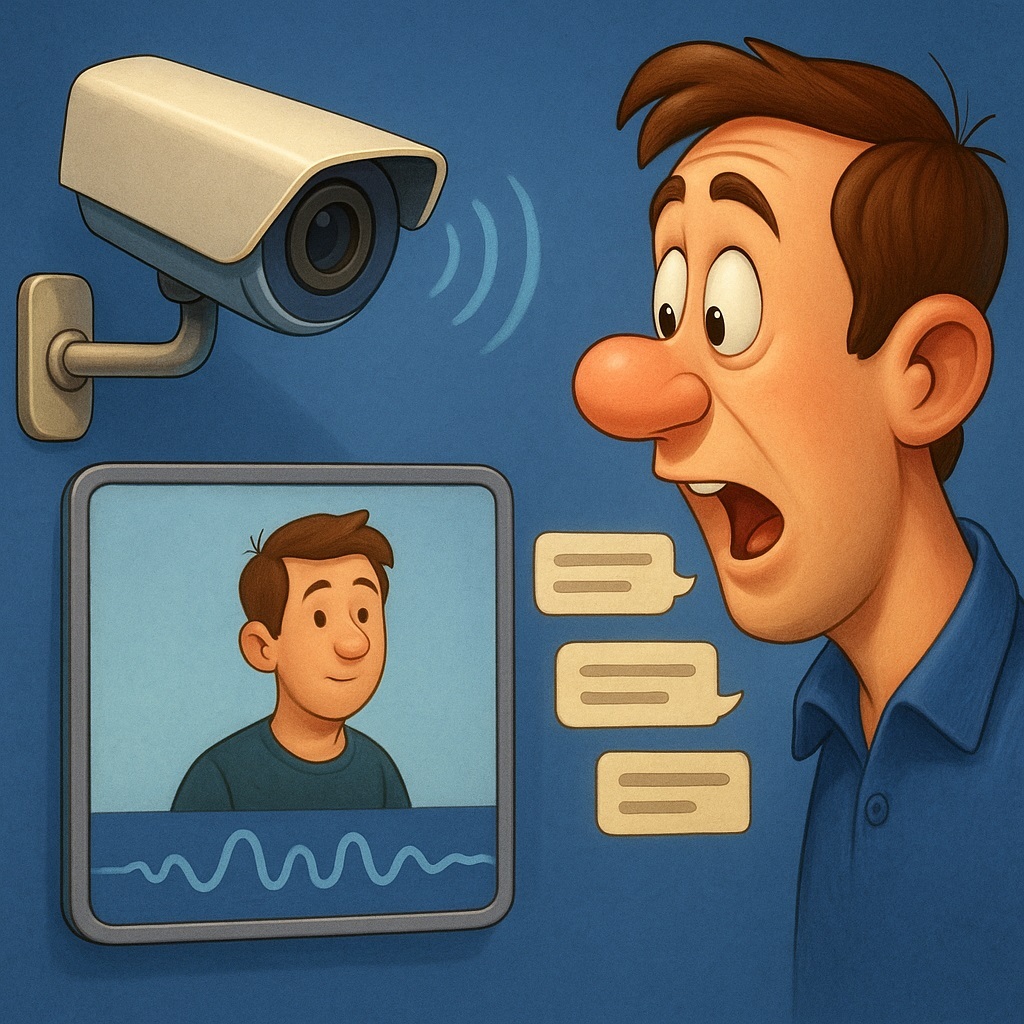SmartVision. Sees. Listens. Understands.
At first glance, surveillance systems seem like silent witnesses — lenses that capture reality without context. But that era is ending fast. Cameras have started not just seeing, but hearing. And not in the old “plug a mic and record” sense — they now understand speech, emotion, and intent.
SmartVision is among the first video surveillance platforms where Automatic Speech Recognition (ASR) isn’t a demo feature — it’s a core analytic engine. The system doesn’t just record sound. It interprets what’s happening around the camera — in real time, in multiple languages, and in sync with visual events.
From Vision to Audio Intelligence
Video has always been the star of surveillance — frames, faces, license plates. But every scene has a soundtrack. People argue, shout, negotiate, ask for help, give commands. That’s where meaning hides — and for years, that meaning was lost in the noise.
SmartVision uses real-time ASR to convert sound into structured, searchable data. It listens, transcribes, analyzes, and connects speech to what’s happening on-screen. The result? A video archive that’s no longer just a folder of files — it’s a living, timestamped record of human interaction.
Scenario 1: Speech Recognition with Video Recording
The classic mode — video and audio recorded together. SmartVision transcribes everything with precise timestamps.
Why it matters:
- Keyword Search: Type “fire,” “leave the bag,” or “cancel order,” and jump straight to the right second.
- Event Documentation: Perfect for investigations — showing who said what, when.
- Service Quality Control: Analyze tone and speech at service points to detect issues or measure politeness.
- Multilingual Sites: The interface can auto-translate recognized phrases (“Excuse me, where is exit?” → “Извините, где выход?”).
- Staff Training: Real conversations become material for training and feedback loops.
Everything is synced — video, audio, and text — filterable, exportable, report-ready.
Scenario 2: Recognition without Audio Storage (Privacy Mode)
Sometimes, recording audio isn’t allowed — hospitals, banks, or private offices. SmartVision adapts.
It stores only text metadata: timestamps, recognized phrases, language, and confidence level.
If it hears “help!” or “fire!”, it can trigger an alarm instantly — without saving a single sound byte.
This privacy-first mode suits environments where confidentiality outweighs evidence. It also cuts storage requirements drastically.
Scenario 3: Audio-Only Analytics
SmartVision isn’t tied to cameras. It can analyze feeds from intercoms, SIP phones, or radio headsets.
Typical use cases:
- Intercoms and Gates: Recognizes intent (“delivery,” “visitor,” “threat”) and shows a text summary before the operator answers.
- Security Radio Traffic: Transcribed logs allow fast searches (“post three, alarm!”) and efficiency analysis.
- No-Camera Zones: In corridors or restricted areas, SmartVision builds an “audio map” of events with time markers.
Even without video, the system remains aware — and responsive.
Scenario 4: Sound Events without Speech
Speech is just one part of the audio spectrum. SmartVision also detects audio patterns — screams, gunshots, glass breaking, alarms.
Examples:
- “Scream” → triggers PTZ auto-focus on the source.
- “Glass break” → starts recording, activates a spotlight.
- “Gunshot” → raises alert priority and tags the clip as “possible assault.”
All processing happens locally — edge-level AI, no audio upload needed.
When Sound Enhances Vision
Audio gets truly powerful when fused with video.
Imagine: a person says, “Leave the bag by the door,” and SmartVision captions it live while linking the phrase to the object movement.
Or a parking lot camera picks up, “Let’s get out of here fast” — the system flags the vehicle and saves the event as “suspicious dialogue.”
The result is a multimodal chronicle — a unified narrative of vision and sound.
Multilingual by Design
Modern enterprises are polyglot ecosystems — campuses, airports, hotels.
SmartVision recognizes dozens of languages — English, Spanish, Russian, Chinese, Arabic, and more — even switching on the fly.
So when an American operator sees “Fire alarm,” a Finnish colleague reads “Пожарная тревога.”
Global collaboration becomes seamless.
Privacy Meets Intelligence
Security vs. privacy — the eternal dilemma. SmartVision offers balance:
- Record audio only on event triggers.
- Store transcripts but delete original sound.
- Auto-delete logs after a set time.
- Fully disable recording while keeping live recognition.
It’s about awareness without surveillance — a listening system, not an eavesdropping one.
Real-World Applications
- Industrial sites: Detects “stop the line!” or “injury!” amid machine noise — halts processes automatically.
- Public spaces: “Help!”, “Fire!”, “Call the police!” — trigger emergency workflows and camera zooms.
- Customer service: Captures “refund,” “complaint,” “warranty” for sentiment and dispute analysis.
- Residential complexes: Transcribes intercom requests like “door won’t lock” or “noise at night.”
- Transportation hubs: Multilingual ASR enables instant response to passengers’ requests.
- Hospitals and schools: Temporary voice recognition for distress words (“hurt,” “fall,” “urgent”) — without storing any audio.
Architecture: Hearing Built In
ASR is embedded deep in SmartVision’s multi-server architecture.
Audio can be processed:
- On edge devices (cameras, intercoms)
- On a local GPU-powered ASR node
- Or in the cloud for scalable, multilingual operation
This distributed model allows hundreds of real-time streams without overloading the central system.
In an age where AI powers everything from espresso machines to satellites, one question remains:
Why should surveillance systems understand speech?
Because meaning matters.
SmartVision adds hearing to vision — turning passive observation into comprehension.
It doesn’t just record what happens — it grasps why.
It recognizes commands, emotions, distress, and intent.
It transforms the video archive from a silent box into a dynamic source of truth.
Once, operators stared at screens guessing what someone just said.
Now, they can simply read it — accurate to the very second.

